The programme of legal education delivered by Middle Temple today is rich and varied, from the fully-fledged series of Qualifying Sessions led by former and current practitioners to the range of vocational training which aims to help future barristers develop their research, analytical, communication and advocacy skills. Mooting, as a long-established example of such vocational exercise, gives students an opportunity to argue legal issues before a panel of judges in a simulated court environment. While the imperative to moot has been championed by generations of like-minded Middle Templars, the development of the exercise at the Inn has undergone a somewhat bumpy journey over the past few centuries.
Mooting has been and is still conceptualised as a pleading exercise where students take part in disputations by arguing fictional cases. However, in the nascent years of Middle Temple, the exercise had a greater significance as it constituted part of the requirement for Call to the Bar alongside attendance at formal lectures, known as Readings. From the 16th to mid-17th centuries, moots were held in Hall during vacations between terms, hence their being referred to alternatively as ‘vacation exercises’. It is said that the many tasks underlying a moot - from analysing the facts given in a case and drawing a writ to elaborating on pleadings and arguing - ‘could occupy many days or even a whole vacation’.
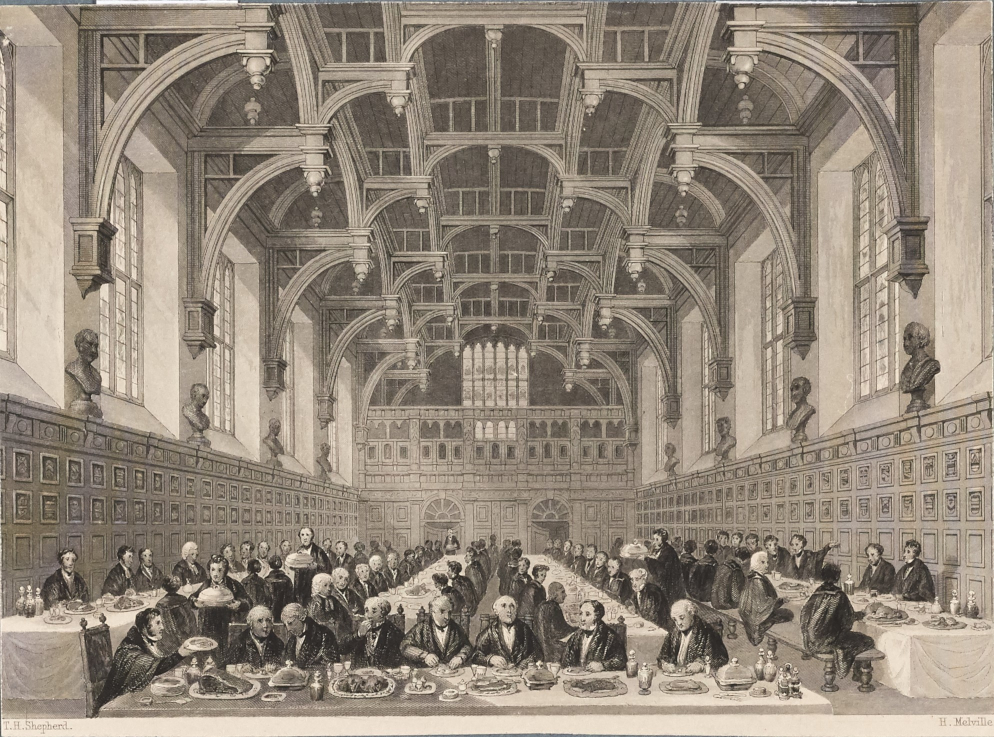
Print of Benchers and Members taking Commons inside Middle Temple Hall, by Thomas H. Shepard, c. 1840 (MT/19/ILL/D/D2/1)
Several surviving Orders of Parliament in the Archive testify to the Inn’s emphasis on mooting and the cost of incompliance. A 1617 order titled ‘Faylors of mootinge in Trinitie terme’ gives a list of gentlemen who had failed to moot, with notes on fining. Indeed, members had been warned in an order issued earlier in 1614 that ‘every utterbarrister of this house that hath not mooted his assignment shall moote according to his antiquity in this house’, unless their absence ‘be excused by sickness and the sufficient causes to be allowed of, by the masters of the Bench’. During that time, moots would have been assigned to members during Commons, and those who failed to present at the Commons during such assignment could be penalised, as well as those who failed to moot.
The practice of mooting continued to thrive at the Inn until the outbreak of First English Civil War in 1642, which dealt a severe blow to the Inn’s provision of legal education by causing the dispersal of members and the suspension of learning exercises. Parliament issued an order on 13 May 1647, following ‘the great troubles of the Kingdom’, in an attempt to revive mooting, stipulating that those who ‘refuse so to doe, shall lyablee onto e undergoe such forfeitures and penalties without abatement’. The effectiveness of the order is questionable, as in 1695 there was a further order announcing that due to ‘the decay of learning within this Society’ moots in Hall should be ‘revived and duely observed’ and be allowed to performed even during term time.
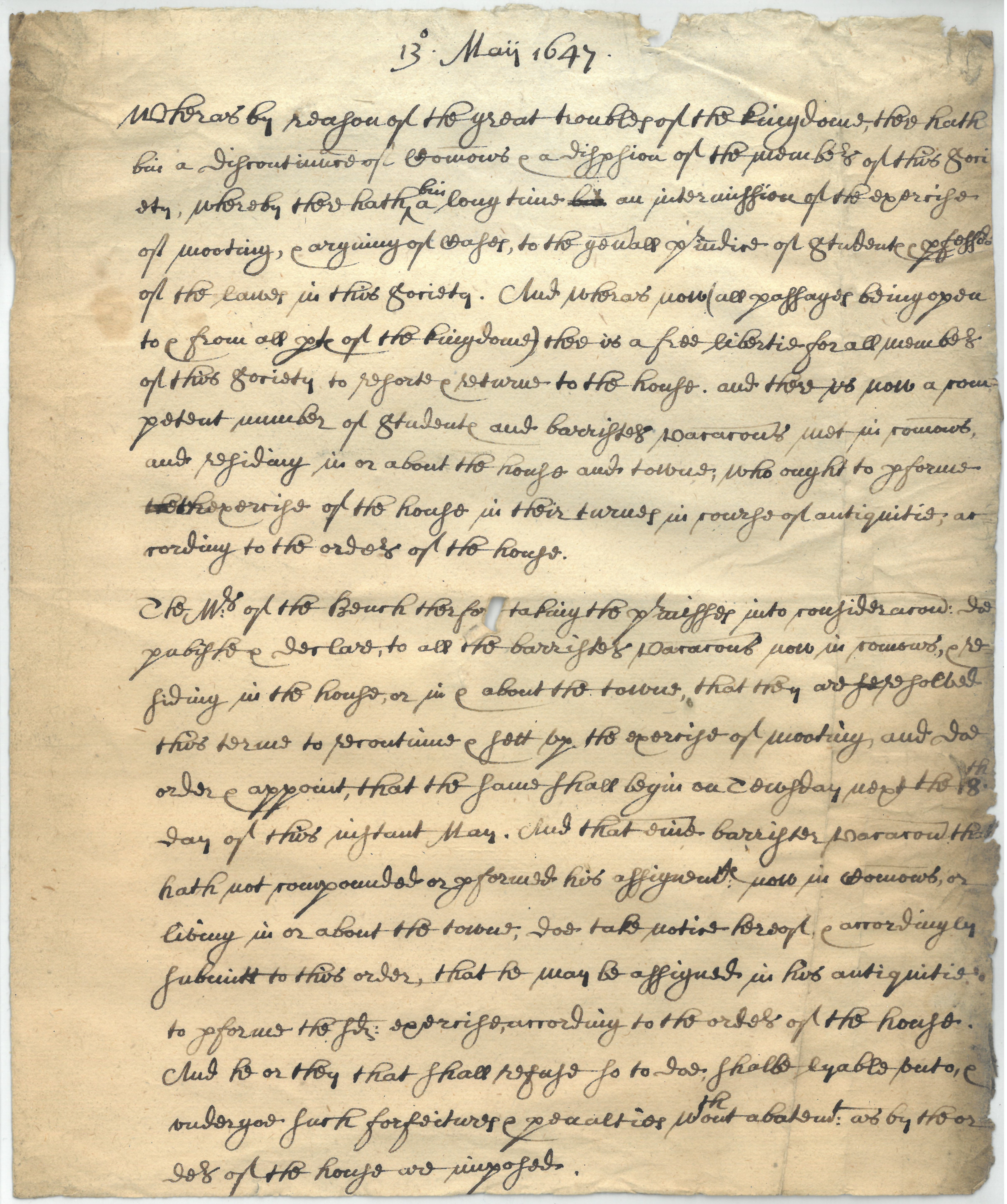
An Order of Parliament concerning the recommencement of mooting following the First English Civil War, 13 May 1647 (MT/1/PPA)
In the coming decades, as a result of the Inn’s efforts, mooting regained some of the popularity it once enjoyed. The 18th century also saw the practice of mooting at the Inn becoming more established. To prove their attendance, mooters were required to obtain a certificate, while the Masters of the Bench who acted as presiding judges in rotation could be fined for omitting their duty, and subject to a privation of 'Chamber options' until payment was made.
Particulars of each moot, including case questions and names of the participating students, would have been recorded in what was called a ‘Moot Book’ by the Inn’s Butler. Before the end of each vacation, the book would be submitted alongside mooters’ written pleadings to the Treasurer, who would then report to the Benchers for their perusal. Early volumes of the Middle Temple’s Moot Book, unfortunately now lost but cited in a subsequent report kept in the Archive, documented the prevalence of mooting in the second half of the 18th century: a total of 30 cases were argued by 10 students in Hall during the Hilary vacation in 1758 and the number of cases surged to 87 during the Michaelmas vacation in 1775.
The surviving Moot Books of New Inn, the Inn of Chancery associated with Middle Temple, which date back to 1748, offer an excellent window into the legal conflicts that the then barristers-to-be might face in their future career. A lot of cases mooted during this time surrounded land ownership disputes, tenancy affairs, breach of contractual obligations and property inheritance. There were also cases relating to laws that would later be abolished, such as the law of deodand, which refers to property forfeited to the crown for causing someone’s death. Hence, some mooters found themselves facing an imaginary, but rather thorny, paradox: If the King’s coach in motion should kill a man, is it a deodand and, if it is, to whom?
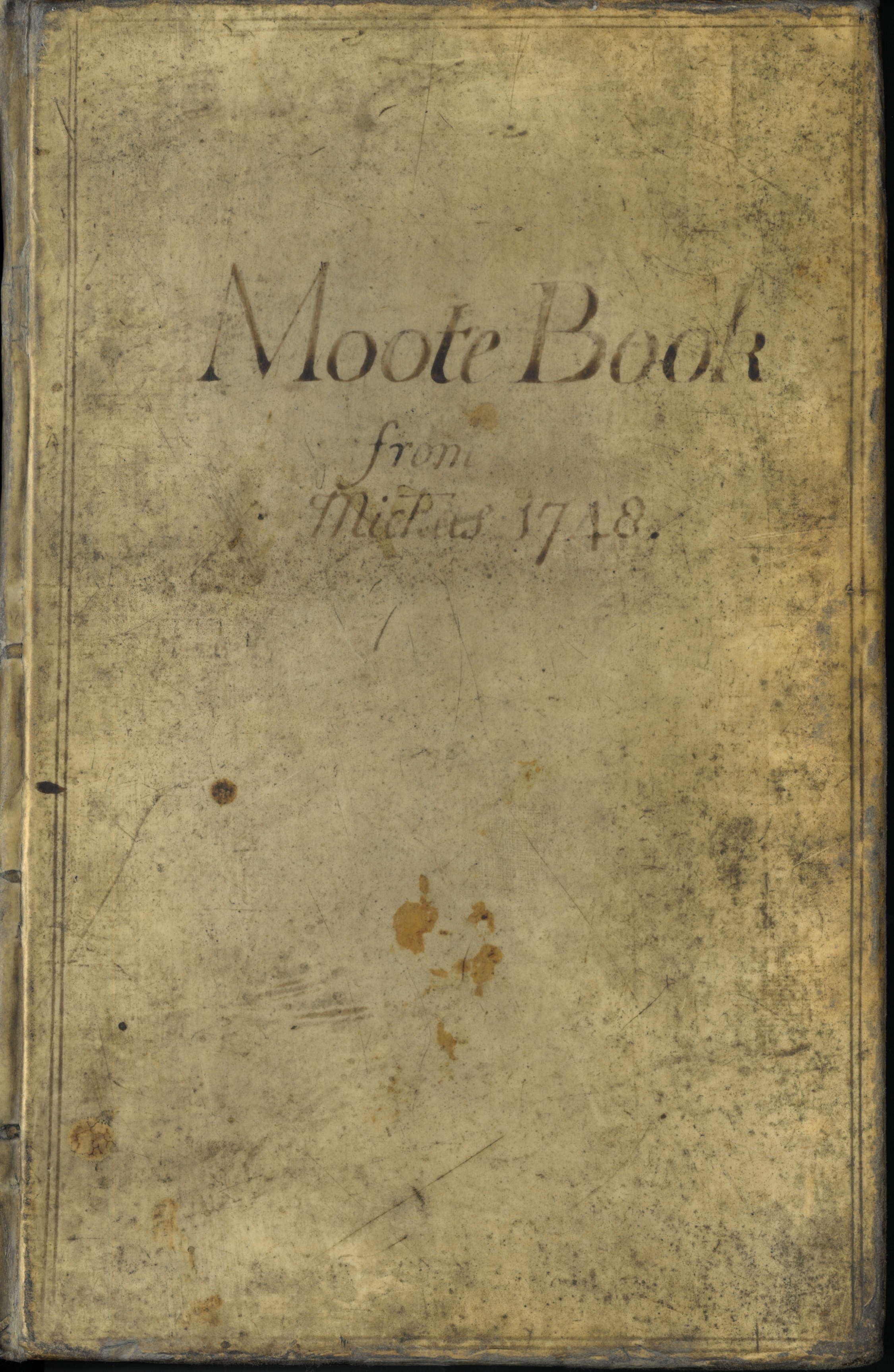
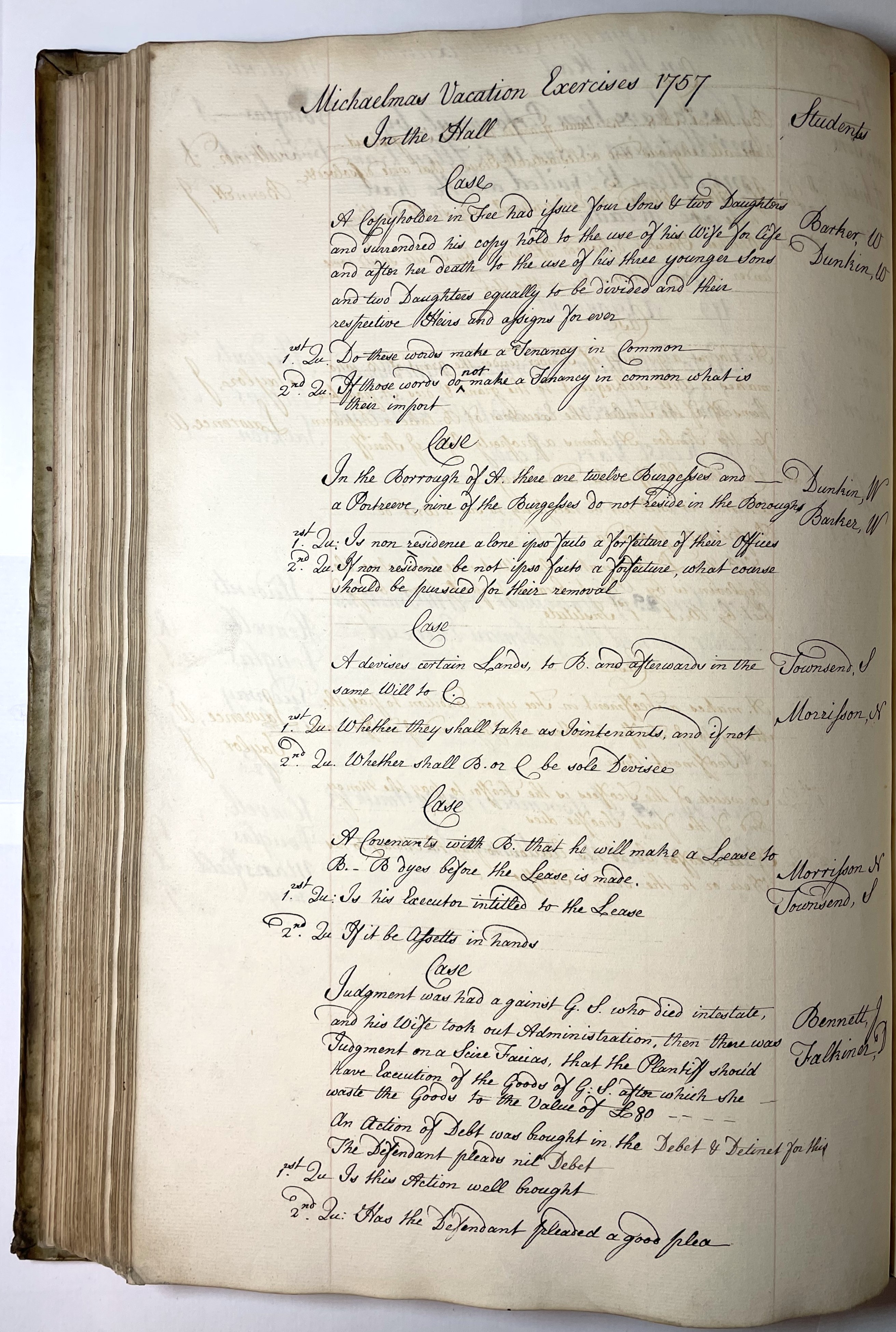

The first volume of the three New Inn Moot Books, which document the details of each moot, 1748–1763 (MT/12/MOO/1)
The entries of the 1775 Hall moots were the last to have been recorded in the Middle Temple’s Moot Book, suggesting that the exercise fell by the wayside again around that time. In New Inn, the practice continued up to at least 1809. The reason for this wave of decline remains a mystery, but it is possible that the pressure of having to pay a fixed money fine for omissions had, for both students and Masters of the Bench, added to the burden of examination and deciding upon numerous written case pleadings and arguments, resulting in the gradual cessation of the practice at both Inns.
A major effort to revive mooting at Middle Temple came in 1858, this time from its members, in the form of a petition signed by 47 students. The petitioners, who spoke highly of mooting as a ‘laudable custom’, firmly believed that its revival ‘would be productive of great improvement and benefit to Students generally in preparing qualify themselves for the Practice of the Bar’. In response to the students’ fervent request, the Parliament appointed Master Henry Bagshawe, the incumbent Lent Reader, to enquire into the matter. In a week’s time, Master Bagshawe swiftly produced a 24-page report, providing fascinating insights into the Inn’s historical practice of mooting.
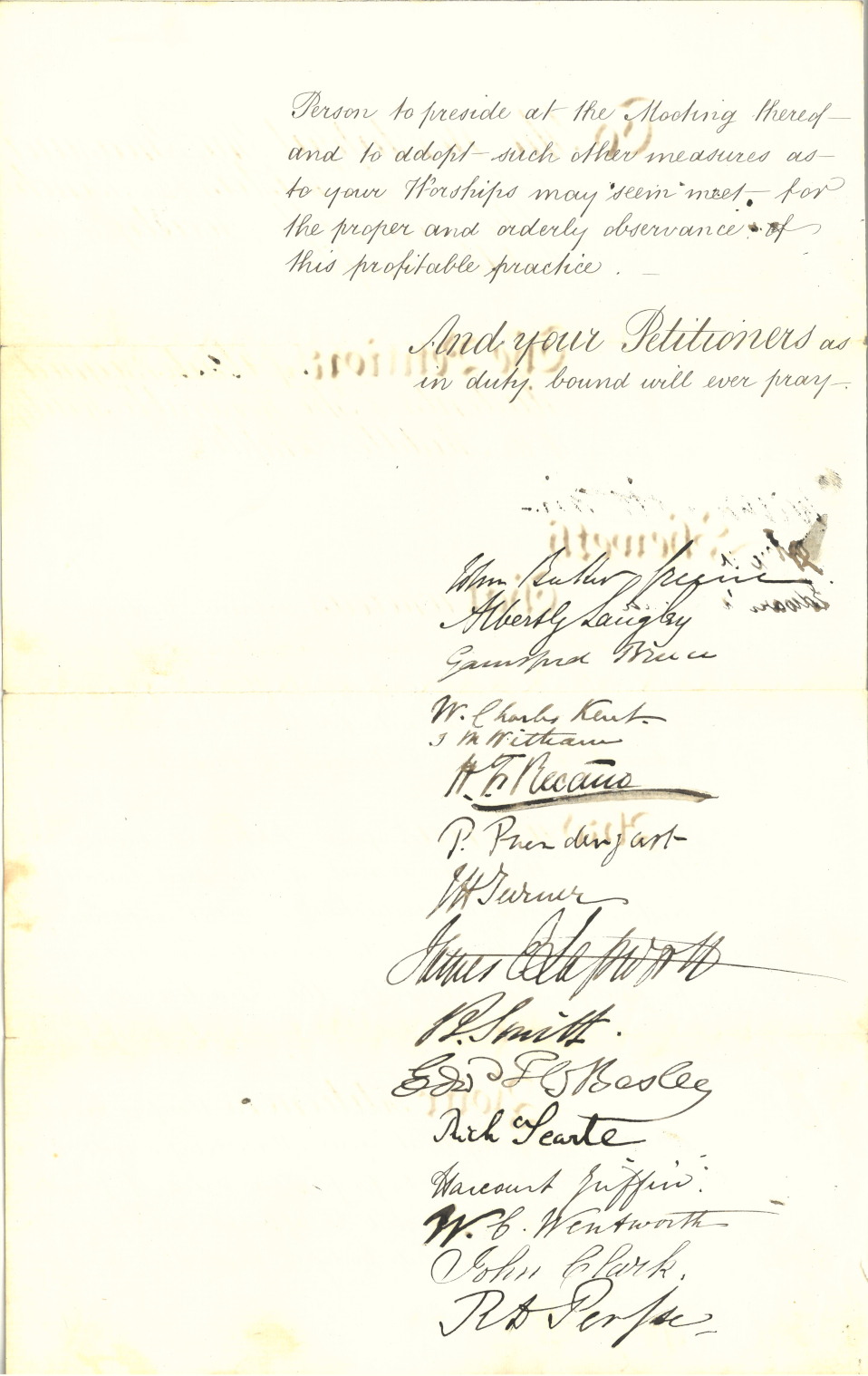
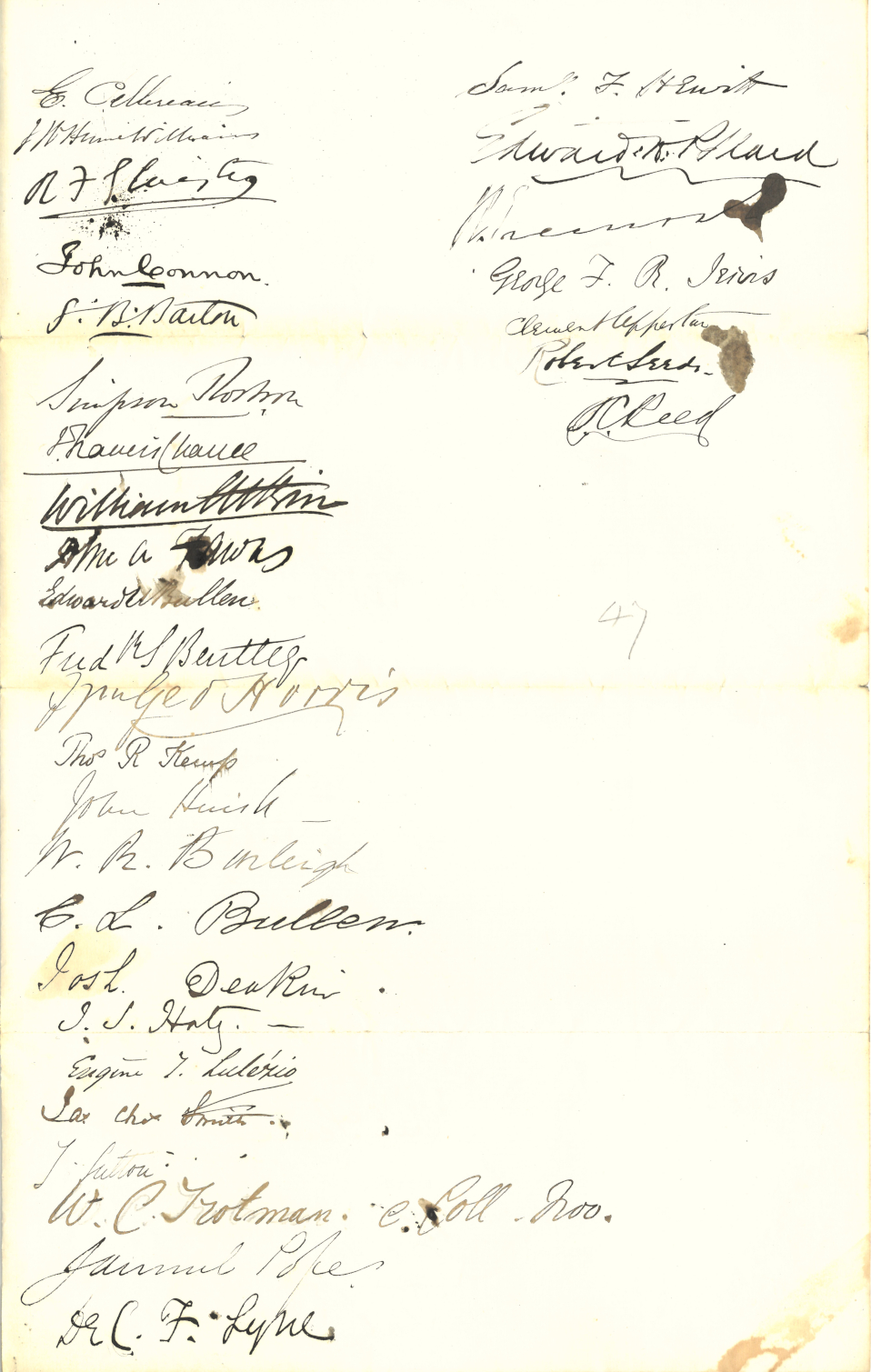
Petition of 47 students for the revival of mooting, [1858] (MT/1/PPA)
Tabled to the Parliament meeting for consideration on 22 January 1858, the exhaustive report charts the development of mooting at the Inn since the mid-16th century and offers 11 suggestions geared towards reviving the ancient tradition of lectures and exercises. Master Bagshawe believed that this would allow the Inn to provide ‘a complete legal education within her own walls for all her students’. His suggestions, which covered the formation of an education committee consisting of Reader, Benchers and barristers elected by practising barristers as well as the financial resources needed for conducting such learning exercises, were, however, not taken further. The report was ordered ‘to stand over’ and no further discussion was recorded in the subsequent meetings of Parliament.
Despite sporadic moots held before the First World War, Middle Templars would have to wait for a further 70 years until mooting found its way back to the Inn’s usual learning initiatives. Following some informal discussions during the 1925 Trinity term, the Parliament unanimously agreed on 18 June that moots were to be held again in Hall, making Middle Temple the second Inn of Court to revive this tradition following Gray’s Inn. A committee consisting of representatives of the Bench, barristers and students was then formed to organise these moots, which were open to all students and barristers of not more than four years standing. While little about the motivation for this revival is known, it was warmly welcomed by barristers, students and the public, generating a huge media interest with articles appearing in multiple newspapers.
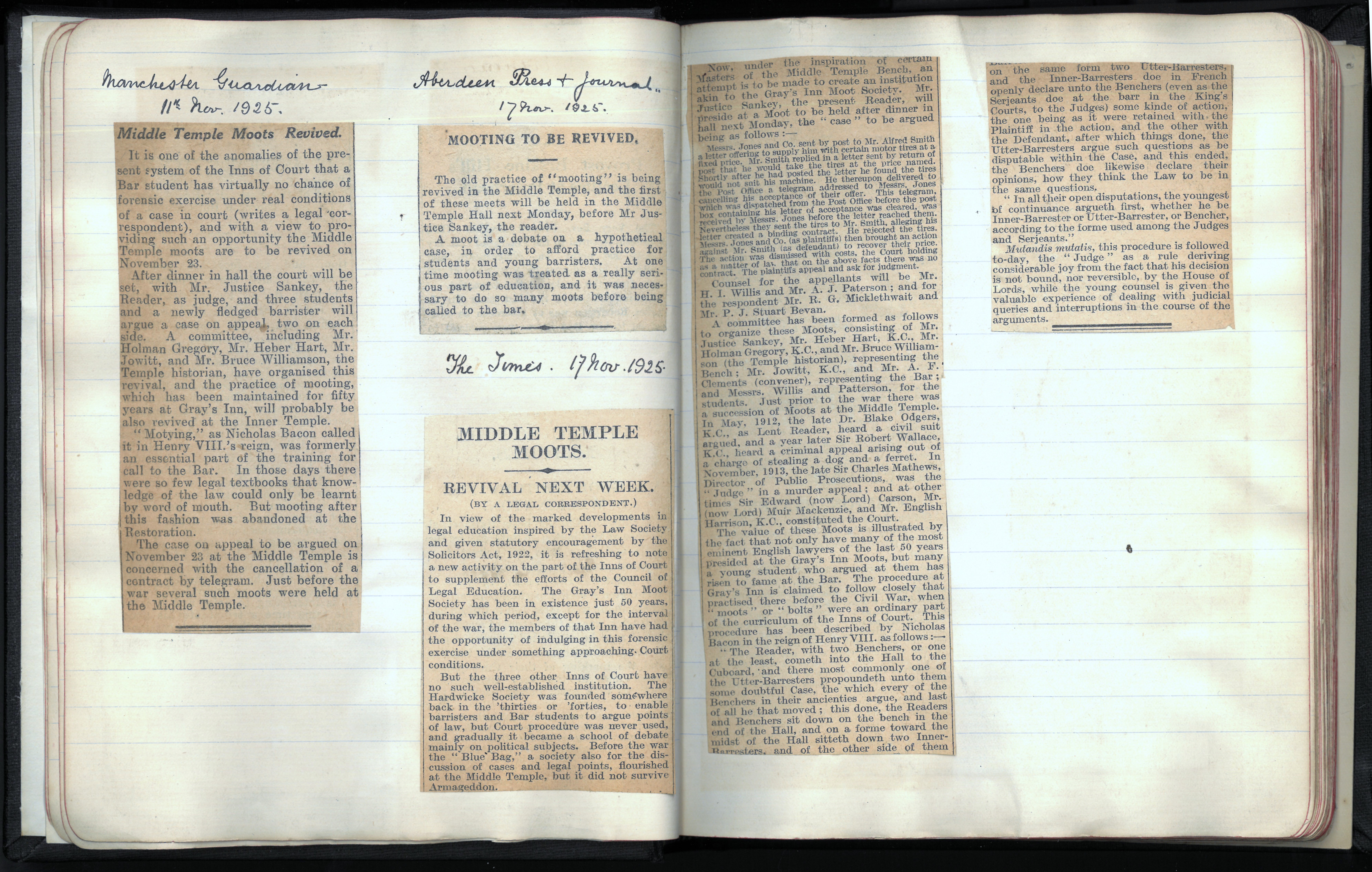
Scrapbook containing news clippings reporting the revival of mooting in Middle Temple, 1925–1934 (MT/13/MOO/2)
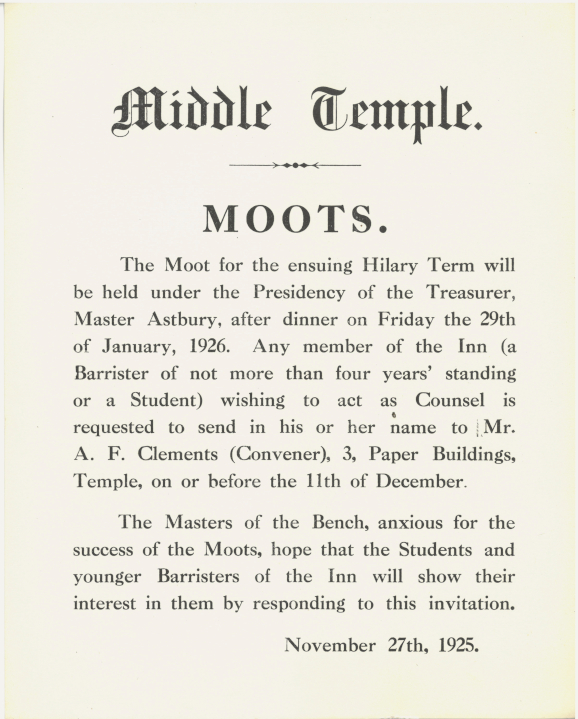
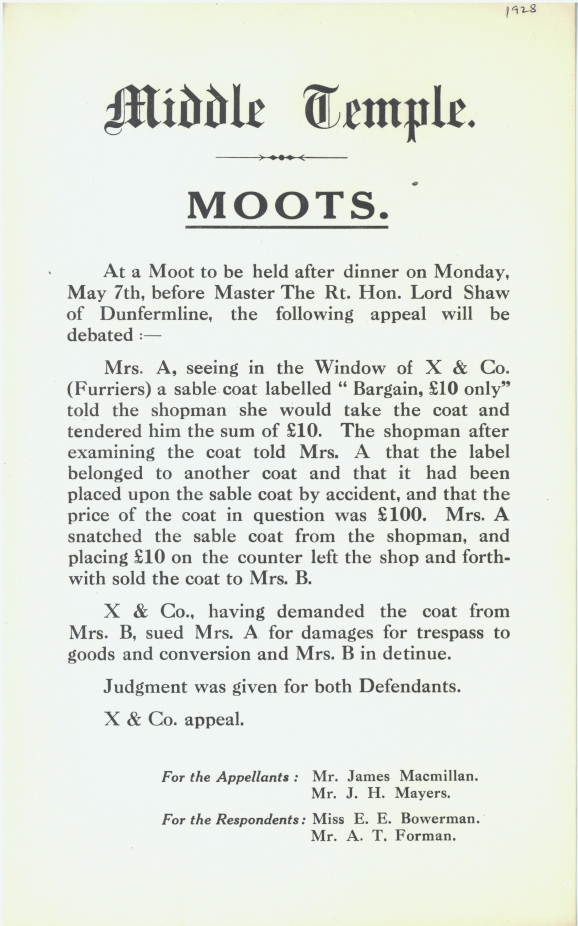
Moot notices to announce signing up procedures and case details before each moot, 1925–1928 (MT/13/MOO/1)
On 23 November 1925, the Inn’s first regular moot in more than a century was held after dinner in Hall, attracting, in the Law Times’ words, ‘a large attendance’. Master John Sankey, who was made Autumn Reader the same year and would later become Lord Chancellor, presided over the moot alongside the Treasurer, Master John Astbury, and other notable senior barristers. The case mooted concerned a dispute over the alleged breaching of a sales contract for motor tyres. After hearing the pleadings and arguments from both sides, Master Sankey ruled in favour of the plaintiff, represented by students Harold Willis - who would eventually become a Bencher - and Aylmer Paterson, that a binding contract did exist and, with a touch of humour, admitted that it was a moot point.

Portrait of John Sankey, painted by Oswald Birley, 1930 (P.099)
As mooting in Hall made a comeback in the 1920s, the subject of debate also grew in both breadth and depth. Moot papers held by the Archive show that case scenarios from this era were fleshed out with much greater detail, adding to the various avenues through which students could approach the issue. The problems also concerned a myriad subjects and situations which would have been unfamiliar to the mooters two centuries earlier. Cases included an injury on a cross-channel cargo flight, a marriage proposal forfeited due to tuberculosis, an anthrax transmission from sharing a shaving brush, and damage to a railway weighing machine by someone unaware of their weight. These all challenged aspiring students and junior barristers with complex yet interesting problems.
Following the success of the 1925 revival, five more moots were held in the next year and more followed in the decade leading up to the outbreak of WWII. Mock trials and practice trials, which tasked students with performing a direct examination of witnesses on top of mooting, were also held, with a jury formed by members of the Inn.
Outside the door of the venerated Hall, the spirit was echoed by avid student mooters across the Inn too. The Plowden Society, a debating society formed by Middle Temple students and young barristers, held their inaugural meeting in 1930 with an aim ‘to encourage speaking among the junior members’ of the Inn. Members then met twice a month during term time at the Inn’s Common Room to hold debates and periodically mock trials or moots, during which proposers and opposers of a motion would take turns in giving speeches, before all participants voted for a winner. Despite its short-lived existence, the society blazed a trail by setting a rule that it should not shy away from debating controversial topics or those that reflect adversely on the crown, religion, the Bar or the Inn. This appears to be true, as documented in the minutes of the society the topics among those debated included the growth of feminism, the merging of the two branches of the legal profession and, in light of the rise of fascism during the interwar years, the idea of England needing a Mussolini.
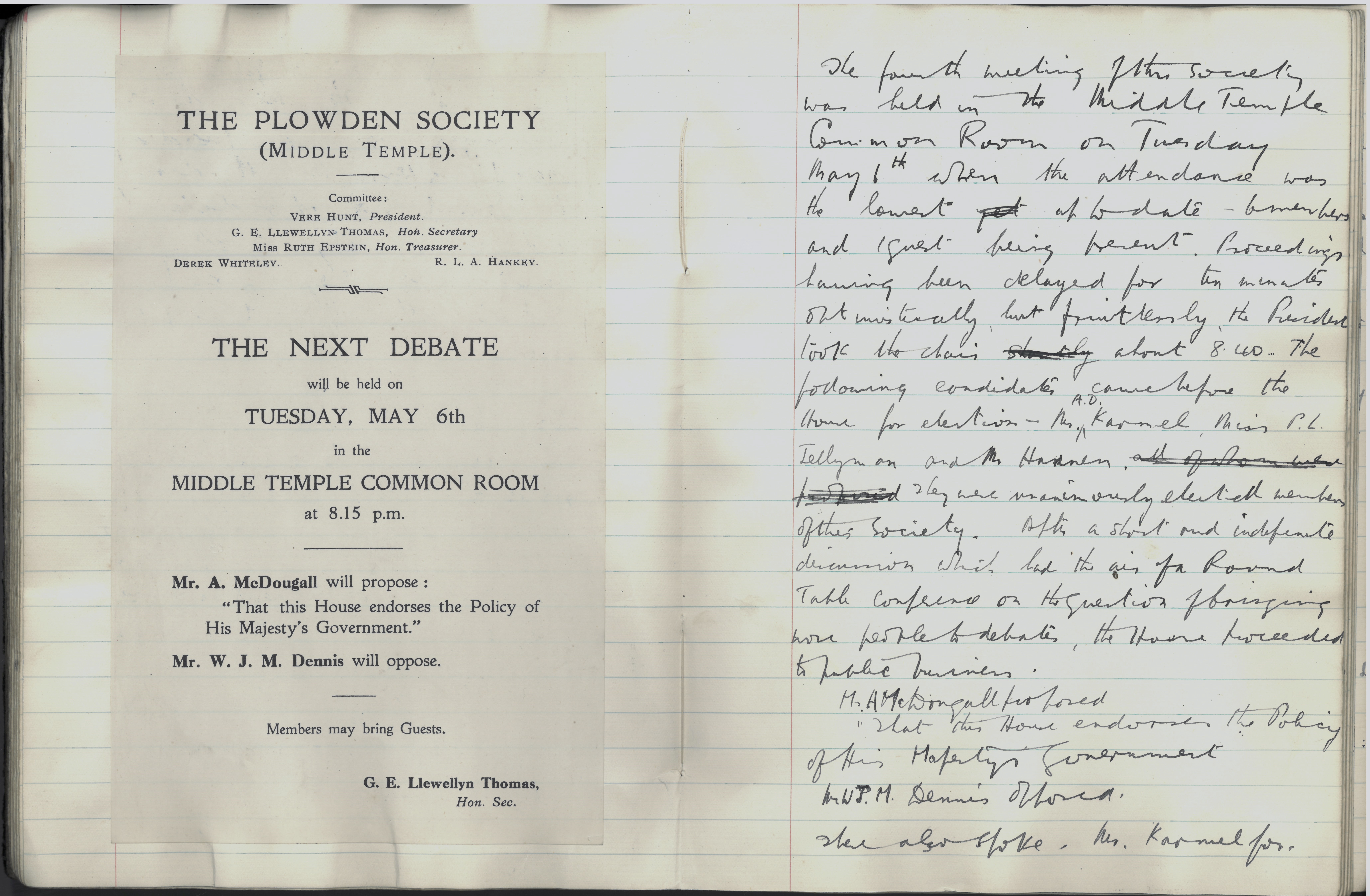
Minutes book of the Plowden Society, pasted with flyers for debate meetings throughout, 1930–1932 (MT/18/PLO/1)
After going through many vicissitudes over the past several centuries, the revered tradition of mooting has once again become an indispensable part of barrister training. Today, members of the Inn benefit from a range of mooting and debating workshops and competitions organised by the Inn, either internally, within the Inns of Court or with other overseas institutions. While the form and scale of modern moots might vary greatly from how they were originally conceived, mooters, both past and present, appealing and defending, will agree that educational value remains at the core of this intellectually stimulating and rewarding exercise.